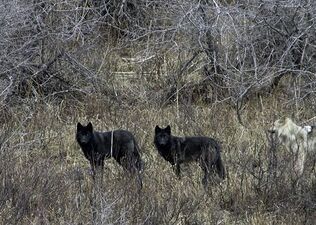Restoring Fire, Wolves, and Elk in the Rockies
| Organization | Earthwatch Institute |
|---|---|
| Region | Peru |
| Website | Website |
| ProjectLeader | Heather Wilcox |
| Linked Problems & Solutions
|
|---|
Only 5% of Canada's native grasslands remain, and they are filled with North America's iconic species: wolves, grizzlies, bighorn sheep, moose, bison, eagles and more. Park managers set controlled fires to attract grazers like elk that eat invasive species and keep the prairies from being overrun. But elk attract wolves, and wolves scare away elk. Help Earthwatch scientists better understand these chain reactions to ensure that a healthy, balanced ecosystem is maintained.
Challenge
The remaining 5% of Canada's native grasslands are one of the last wild and intact habitats left in North America, containing species present in 1800. Over time, humans eliminated two key components of this ecosystem: wolves and wildfires. Park managers now set controlled fires to attract grazers like elk that eat invasive species and keep the prairies from being overrun. But recovering wolf populations might be scaring away the elk before they can graze away the invasive species.
Long-Term Impact
Research has shown that ecosystems containing fires, and top predators such as wolves, have greater biodiversity and are therefore more resilient to climate change. The data collected through this study will not only guide ongoing local management strategies, but will also help inform the larger, global conversation around predator-prey relationships (known as trophic cascades) and the role of fire in grassland-aspen communities.
References
- http://www.earthwatch.org
- http://earthwatch.org/expeditions/tracking-fire-and-wolves-through-the-canadian-rockies
- http://cristinaeisenberg.com/
Additional Documentation
https://www.globalgiving.org//pfil/21597/projdoc.pdf
Project Gallery










